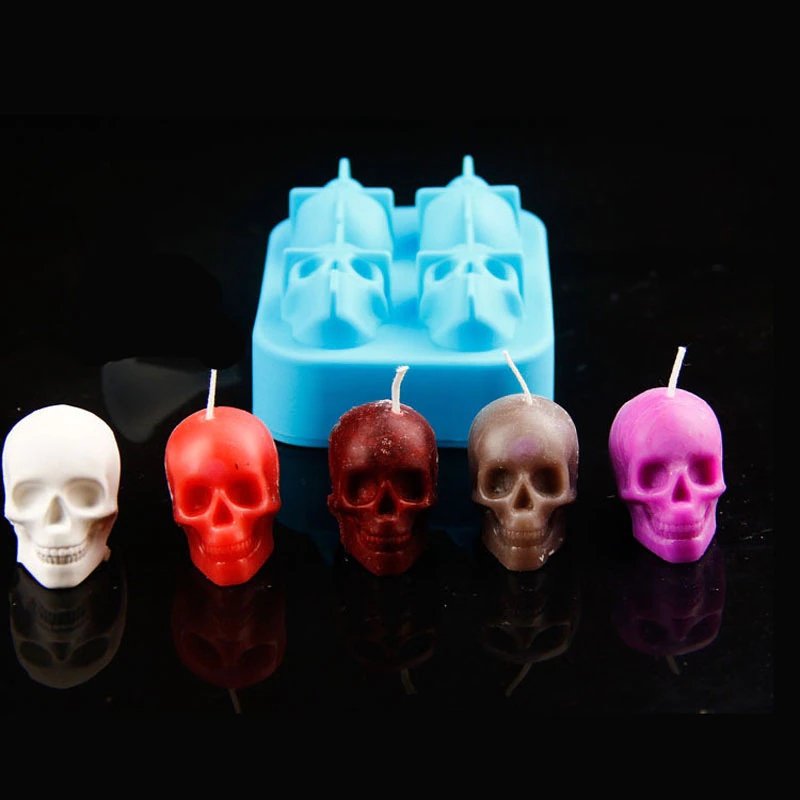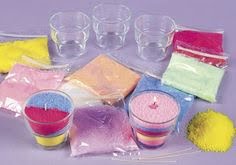Candle making is a craft that has been enjoyed for centuries, providing both practical and artistic satisfaction. One intriguing phenomenon that often occurs during the candle making process is the production of a bubbling noise. This unanticipated sound can be both surprising and puzzling to beginners and experienced candle makers alike. In this article, we will delve into the science behind this intriguing occurrence, exploring the chemistry of wax and the factors that contribute to bubbling in candle making.
Understanding the process of candle making requires an appreciation for the science behind it. The combination of various waxes, dyes, and fragrances along with the application of heat leads to a complex chemical reaction that can result in the release of bubbles and their accompanying noise. By gaining insight into these scientific principles, we can gain a better understanding of how to manipulate these factors to prevent or even embrace bubbling in our candle making endeavors.
In addition to understanding the chemistry behind bubbling in candle making, it is essential to identify common causes and factors that contribute to this phenomenon. From temperature and environment to different types of waxes used, there are various elements at play that can impact whether or not bubbling occurs during the candle making process.
In the following sections, we will explore these factors in detail while also providing practical tips and techniques for preventing bubbling and ensuring a smooth, noise-free experience when creating candles.
The Science Behind Candle Making
When it comes to understanding the science behind candle making and why bubbling occurs, it’s essential to delve into the chemistry of wax. Wax is a complex organic compound primarily composed of long hydrocarbon chains, which are made up of carbon and hydrogen atoms. During the candle-making process, the wax undergoes several transformations that can lead to bubbling and other phenomena.
To better understand why bubbling occurs during candle making, it’s important to consider the behavior of wax when exposed to heat. As the wax is heated, it begins to melt and undergo a phase change from a solid to a liquid state.
This process involves the breaking of intermolecular bonds within the wax structure, causing it to become more fluid. However, if there are impurities or air pockets present in the wax, these can cause bubbles to form as the wax melts.
Furthermore, when fragrance oils or dyes are added to the melted wax, they can also contribute to bubbling by creating air pockets within the mixture. This is especially true if the additives are not properly mixed or if they contain volatile compounds that vaporize at lower temperatures. As a result, these substances can release gases as they react with the heat, leading to bubbling and hissing noises during the candle-making process.
To prevent bubbling in candle making caused by air pockets and impurities in the wax, consider these tips and techniques:
- Use high-quality waxes with minimal impurities
- Stir the melted wax thoroughly to release trapped air bubbles
- Avoid overheating the wax, which can lead to excessive bubbling
- Choose fragrance oils and dyes specifically formulated for candle making
By understanding these common causes of bubbling in candle making and implementing preventative measures, crafters can achieve a smooth and noise-free process while creating their desired candles.
Common Causes of Bubbling in Candle Making
When it comes to the intriguing phenomenon of candle making, one common issue that crafters may encounter is the occurrence of a bubbling noise during the process. Understanding the common causes behind this noise is essential for ensuring a smooth and successful candle-making experience.
There are several factors that can contribute to the bubbling noise in candle making, including:
- Overheating: If the wax is heated at too high of a temperature, it can lead to bubbling as the wax becomes agitated and creates small air pockets within the melted wax.
- Moisture Contamination: If there is any moisture present in the wax or the candle-making environment, it can cause bubbling as it reacts with the hot wax.
- Air Entrapment: When pouring the hot wax into molds or containers, air can become trapped within the liquid wax, leading to bubbles forming as it cools.
To prevent bubbling in candle making and ensure a smooth, noise-free process, consider implementing the following tips and techniques:
- Use a thermometer to carefully monitor and control the temperature of the wax during heating and pouring.
- Preheat your containers or molds before pouring in the melted wax to reduce air entrapment.
- Store your wax in a dry and cool environment to prevent moisture contamination.
By understanding these common causes of bubbling in candle making and implementing preventative measures, crafters can minimize this noisy phenomenon and create beautiful, smooth candles without any unwanted disruptions.
How to Prevent Bubbling in Candle Making
When it comes to candle making, preventing bubbling is crucial to achieve a smooth and noise-free process. Bubbling can not only affect the aesthetic appeal of the candle but also create structural weaknesses that may compromise its burning performance. Fortunately, there are several tips and techniques that can help mitigate the occurrence of bubbling during the candle making process.
Proper Wax Temperature
One of the most common causes of bubbling in candle making is using wax at an incorrect temperature. If the wax is too hot, it can lead to excessive air bubbles forming in the candles.
On the other hand, if the wax is too cool, it can result in uneven distribution and shrinkage of the wax, causing pockets or holes to form as it cools. To prevent bubbling, it is important to melt and pour the wax at the recommended temperature specified by the wax manufacturer.
Stirring Technique
The technique used while stirring the melted wax can also impact bubbling during candle making. Aggressively stirring or whisking the melted wax can introduce air into it, leading to bubble formation when poured into molds. Instead, gently stir or mix the melted wax to minimize air incorporation and reduce the chances of bubbling.
Preheating Molds
Preheating molds before pouring in the melted wax can help reduce bubbling as well. When you pour hot liquid wax into a cold mold, rapid cooling occurs at that point of contact which increases chances for bubbles forming within your finished product. Preheating your molds will allow for a more even cooling rate across all surfaces which should reduce or entirely eliminate this issue.
By implementing these tips and techniques, candle makers can significantly reduce and prevent bubbling in their creations, ensuring a smooth and noise-free process from start to finish.
Exploring Different Types of Waxes for Candle Making
When it comes to candle making, the choice of wax can greatly impact the final product, including the potential for bubbling noises during the process. Different types of waxes have varying characteristics that can affect their bubbling potential, making it important for candle makers to understand these differences in order to achieve their desired results.
Paraffin Wax
Paraffin wax is one of the most commonly used waxes in candle making. It is known for its excellent scent throw and ability to hold color well. When it comes to bubbling potential, paraffin wax has a lower likelihood of producing bubbling noises compared to other waxes. This makes it a popular choice for those looking for a smooth and quiet candle making process.
Soy Wax
Soy wax is a natural alternative to paraffin wax and is favored by many environmentally conscious candle makers. However, soy wax has a higher tendency to produce bubbling noises during the candle making process. This may be attributed to its lower melting point and unique composition, which makes it important for those working with soy wax to take extra care in preventing and addressing bubbling issues.
Beeswax
Beeswax is another natural option known for its lovely aroma and clean burn. While beeswax generally has a low propensity for bubbling, variations in purity and quality can impact its behavior during the candle making process. It’s important for candle makers working with beeswax to carefully source their materials and experiment with different temperatures and techniques to minimize the occurrence of bubbling noises.
By understanding the different properties of these waxes, candle makers can make informed decisions about which type of wax may best suit their specific needs and preferences when it comes to minimizing or embracing bubbling noises during the candle making process.
The Impact of Temperature and Environment on Bubbling in Candle Making
When it comes to candle making, external factors such as temperature and environment play a significant role in the occurrence of bubbling noises during the process. The temperature at which wax is melted and poured, as well as the overall environment in which the candle making takes place, can greatly affect the outcome of the final product. Understanding how these external factors impact the bubbling noise is crucial for achieving a smooth and successful candle making experience.
Temperature has a direct effect on the viscosity of the wax, which in turn affects its ability to release any trapped air bubbles. If the wax is too hot when poured into a mold, it can create turbulence and cause bubbling noises as air escapes from the rapidly cooling wax.
On the other hand, pouring wax that is too cold can also result in bubbling due to incomplete filling of the mold or poor adhesion between layers. Additionally, fluctuations in temperature during the cooling process can lead to uneven surfaces and potential cracking, further contributing to unwanted bubbling noises.
Furthermore, environmental factors such as humidity levels can impact candle making by affecting how quickly or slowly the wax sets. High humidity can prolong setting times and increase the chances of air bubbles forming within the wax as it solidifies.
Conversely, low humidity levels may cause rapid cooling and premature solidification of the wax, potentially resulting in trapped air pockets that lead to bubbling noises once lit. It’s important for candle makers to consider these external factors and make necessary adjustments to their working conditions in order to minimize bubbling occurrences.
| External Factors | Impact |
|---|---|
| Temperature | Affects viscosity of wax and potential for bubbling. |
| Environment (Humidity) | Influences setting times and formation of air bubbles. |
Case Studies and Experiments
Candle making is a delicate art that requires precision and attention to detail. One common issue that candle makers may encounter is the bubbling noise that sometimes occurs during the process. Understanding the causes of this phenomenon and learning how to resolve it can lead to a smoother and more enjoyable candle making experience.
In many cases, the bubbling noise in candle making is caused by trapped air bubbles within the wax. When the wax is heated, these air bubbles expand and rise to the surface, creating a popping or bubbling sound. Additionally, fluctuations in temperature can also lead to bubbling as the wax solidifies at different rates, trapping air in the process.
To prevent bubbling in candle making, it’s important to start with clean equipment and properly preheat your containers. Slowly pouring the wax into the container can help minimize air entrapment, as well as gently tapping the containers to release any trapped air bubbles. Choosing high-quality waxes and avoiding abrupt temperature changes during cooling can also contribute to a smoother end product.
In some cases, embracing the bubbling noise in candle making can lead to unique artistic creations. Some candle makers have found creative ways to incorporate this natural occurrence into their designs, turning what was once seen as an issue into an advantage. By experimenting with different techniques and embracing the quirks of candle making, artisans have been able to turn bubbling noises into visually appealing features of their candles.
| Examples of Bubbling Noises | Resolutions |
|---|---|
| Air bubbles trapped in paraffin wax causing bubbling noises | Using a heat gun or culinary torch to carefully pop any visible bubbles on the surface |
| Rapid cooling leading to uneven solidification of soy wax resulting in bubbling | Slowing down the cooling process by insulating containers or using a heat gun before complete solidification |
| Inconsistent temperature causing bubbling noises in beeswax candles | Using a double boiler or water bath method for more controlled heating and cooling processes |
Creative Solutions for Embracing Bubbling in Candle Making
One creative solution for embracing the bubbling noise in candle making is to incorporate it into the design and aesthetic of the candles. Instead of viewing the bubbling as a flaw, some candle makers have found ways to highlight and enhance this natural occurrence.
For example, intentionally creating a texture on the surface of the candle by allowing controlled bubbling can add a unique and artistic touch. This can be achieved by adjusting the pouring temperature and technique to encourage controlled bubbling that creates visually appealing patterns and designs on the finished candles.
Another creative approach is to experiment with adding color or metallic accents to the wax before pouring it into the mold. When combined with the bubbling effect, these additions can create stunning visual effects that make each candle truly one-of-a-kind. By embracing and working with the natural bubbling noise, candle makers can elevate their creations from simple functional items to pieces of art that showcase their craftsmanship and creativity.
In addition, some artisans have also experimented with incorporating essential oils or fragrances into their wax blends in such a way that when they bubble, they release pleasant aromas. This not only adds a sensory dimension to the candles but also turns what was once seen as an unwanted noise into an intriguing feature that sets their products apart from others in the market.
By finding ways to creatively embrace and use the bubbling noise to their advantage, candle makers are able to turn a potential problem into an opportunity for innovation and originality.
Conclusion
In conclusion, the phenomenon of candle making a bubbling noise is a fascinating aspect of the craft that adds a unique and exciting element to the process. Understanding the science behind candle making and the chemistry of wax allows for a deeper comprehension of why bubbling occurs, and this knowledge can be used to prevent and even embrace it in creative ways.
By identifying common causes of bubbling in candle making and learning how to prevent it through various techniques, candle makers can ensure a smooth, noise-free process. Additionally, exploring different types of waxes and their potential for bubbling can provide valuable insights into selecting the right materials for a particular project.
The impact of temperature and environment on bubbling in candle making cannot be overlooked, as external factors have a significant influence on the process. By considering these factors and implementing creative solutions, such as turning bubbling into an artistic advantage or embracing it as part of the natural charm of handmade candles, crafters can truly elevate their work and produce stunning results.
Ultimately, embracing the quirks of candle making, including the bubbling noise, can lead to innovative techniques and beautiful creations that celebrate the unique nature of this timeless craft.
Frequently Asked Questions
Why Did My Candle Make a Bubbling Noise?
A bubbling noise from a candle could be due to the presence of air bubbles trapped in the wax. When the candle is lit, these bubbles heat up and expand, causing the bubble-like sounds.
Why Do Candles Make a Crackling Noise?
Candles can make a crackling noise due to the release of air and moisture trapped within the wax as it heats up. This phenomenon is often seen in soy-based or wooden wick candles.
Why Is My Candle Boiling?
If your candle is boiling, it could be because the heat from the flame is melting the wax at a rapid rate. This could happen if the candle is placed in a very warm environment or if it is exposed to direct sunlight for too long.

Welcome to my candle making blog! In this blog, I will be sharing my tips and tricks for making candles. I will also be sharing some of my favorite recipes.





